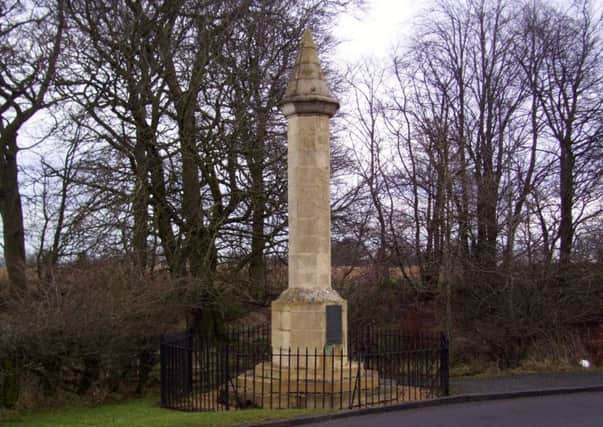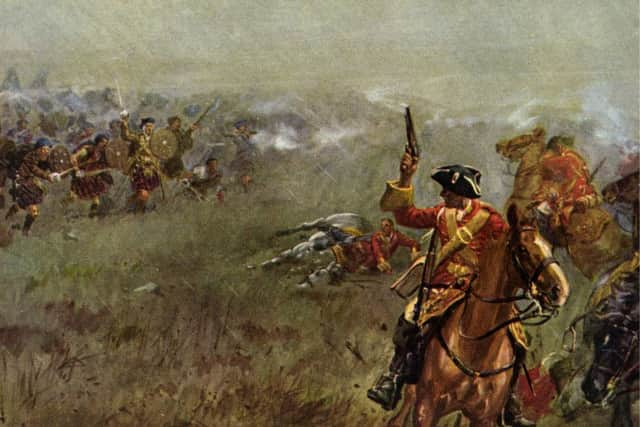Take a walk through Falkirk's battle history


Meantime here is a ‘healthy history walk’ ideal for this week when we remember the Battle of Falkirk Muir fought around South Bantaskine on January 17, 1746.
Start from Callendar House where the commander of the Hanovarian redcoats, General Henry Hawley, was ‘detained’ by the lady of the house, Ann Livingston, whose husband was marching with the Jacobites towards the hill above Falkirk. When the news of the advance arrived he set off at a gallop towards his camp not far from Dollar Park.
Advertisement
Hide AdAdvertisement
Hide AdWe will follow in his hoof steps towards Kemper Avenue then up the old road into Falkirk, East Bridge Street, and through the ‘King’s High Road’ as it was called at the time.


At the foot of the Tanners Brae, Hawley found his dragoons and infantry standing ready and his order was to march immediately up Maggie Woods Loan and thereafter to climb to the south west. The weather was atrocious with wind and rain in their faces as they struggled forward.
Unfortunately we can’t follow their exact route because those pesky industrial revolutionaries built a canal and a railway across our path. We need to cross the Low Park and under the railway and over the water via the Bantaskine Bridge.
From here we make our way up past the Seagull Trust Boathouse to what is now South Bantaskine Park. We are not far from the centre of the battlefield where Hawley’s dragoons encountered the highland clansmen who had arrived along the old drove road from the west.
Advertisement
Hide AdAdvertisement
Hide AdWhat happened next has been told often. The Jacobite right wing swept all before them while on the other side the redcoat infantry held their own and even began to get the upper hand. However, Hawley sounded the retreat and a Jacobite victory was assured. Nearly 400 redcoats died along with about 40 of Prince Charlie’s men. The simple battle monument was unveiled by the Duke of Atholl in 1927.


Hawley’s battered army streamed down the hill towards their camp and we can follow them back across canal and railway but this time making our way along the top of the park and down Major’s Loan. Was it named after someone from the battle? Maybe.
With the redcoats busy burning their tents and scuttling away towards Linlithgow we will follow the same route into the town taken later that day by Lord George Murray and his men. They marched up the Howgate and into the High Street though Roberts Wynd. Best way for us these days is up through the back door of the Howgate Centre via the long flight of stairs. Then, a quick detour (and a welcome rest) at the stained glass windows created for South Bantaskine House in the 1860s.
From the Howgate we reach what is still the heart of the town. The old steeple provided a lock up for the redcoat prisoners and the building where Waterstones is today was made ready for the Prince.
Advertisement
Hide AdAdvertisement
Hide AdOur final visit is to the graveyard of Trinity Church to see the handsome monument marking the resting place of Sir Robert Munro, the clan chief, who was killed, not on the Jacobite side but in command of the redcoat regiment that bore his name – a reminder that Prince Charlie’s Rising was a civil war!
If you left your car at Callendar House you now have another walk before you get home. Don’t worry – it will do you a power of good!